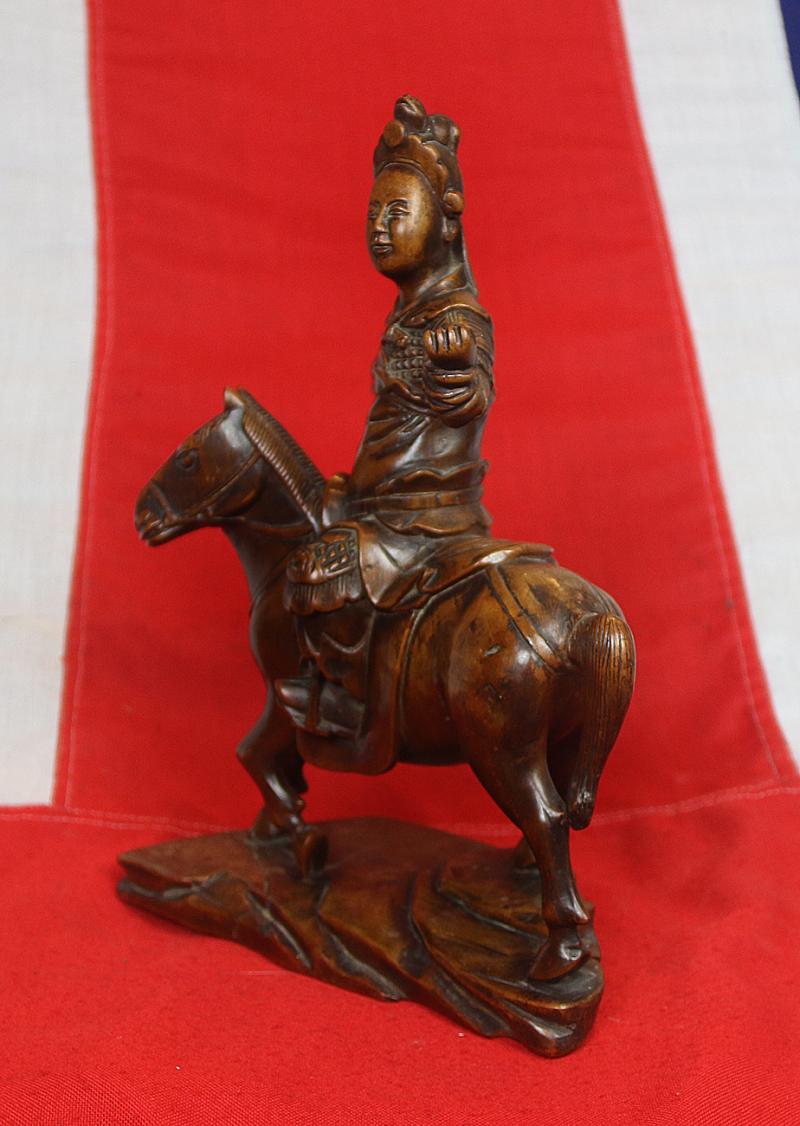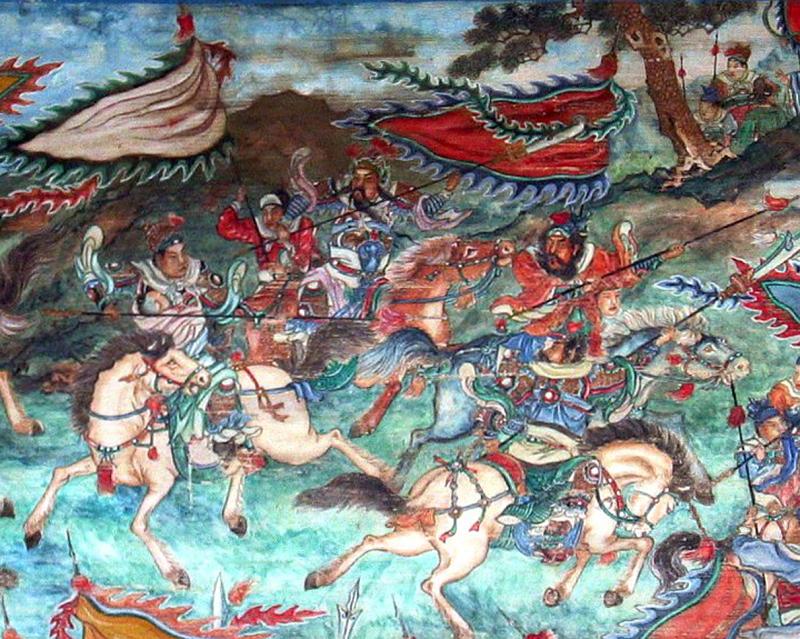A Most Attractive Qing {Ching} Dynasty Carved Wood Sculpture of a Chinese Mounted Han Dynasty General, Probably General Zhaoyun.
Hand carved in the period of the Ching dynasty likely of Zhao Yun 趙雲 (he died in 229), courtesy name Zilong (子龍). He was a military general who lived during the late Eastern Han dynasty and early Three Kingdoms period of China. Originally a subordinate of the northern warlord Gongsun Zan, Zhao Yun later came to serve another warlord, Liu Bei, and had since accompanied him on most of his military exploits, from the Battle of Changban (208) to the Hanzhong Campaign (217–219). He continued serving in the state of Shu Han – founded by Liu Bei in 221 – in the Three Kingdoms period and participated in the first of the Northern Expeditions until his death in 229. While many facts about Zhao Yun's life remain unclear due to limited information in historical sources, some aspects and activities in his life have been dramatised or exaggerated in folklore and fiction. In the 14th-century historical novel Romance of the Three Kingdoms, he was lauded as a member of the Five Tiger Generals under Liu Bei.
Picture in the gallery of a mural depicting Zhao Yun at the Battle of Changban inside the Long Corridor at the Summer Palace in Beijing. The rider in white is ZhaoYun
The Qing dynasty, officially the Great Qing, was a Manchu-led imperial dynasty of China and the last imperial dynasty in Chinese history. It emerged from the Later Jin dynasty founded by a Tungusic-speaking ethnic group who became known as the Manchus. The dynasty was officially proclaimed in 1636 in Mukden (modern-day Shenyang), and following the Battle of Shanhai Pass it seized control of Beijing in 1644, which is often considered the start of the dynasty's rule in China. Within decades the Qing had consolidated its control over the whole of China proper and Taiwan, and by the mid-18th century it had expanded its rule into Inner Asia. The dynasty lasted until 1912 when it was overthrown in the Xinhai Revolution. The condition is good, with an old contemporary repair underneath to the base bottom
Code: 25026






